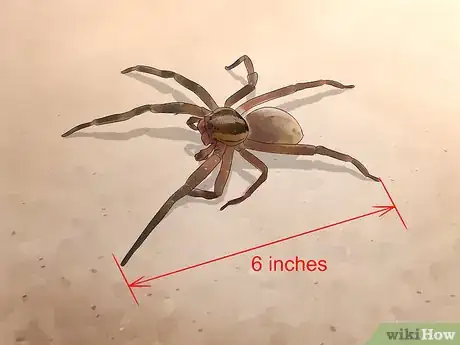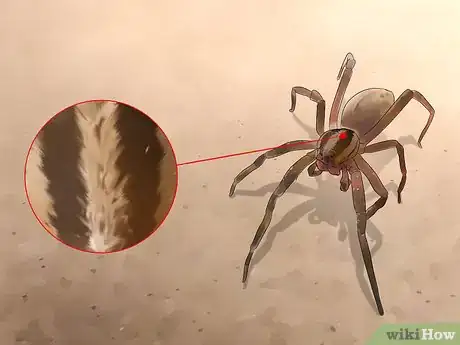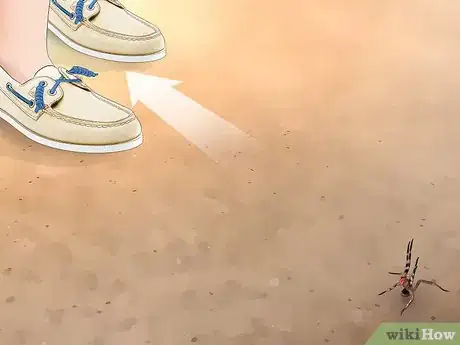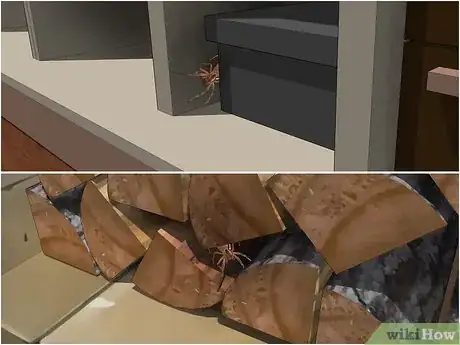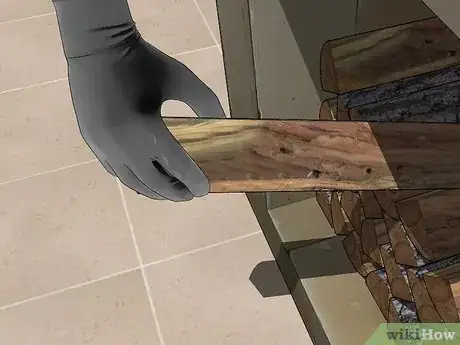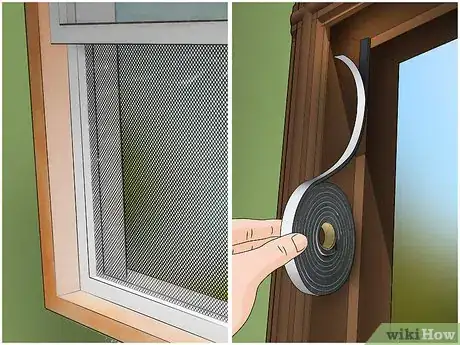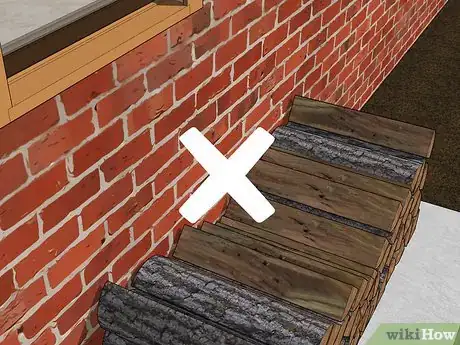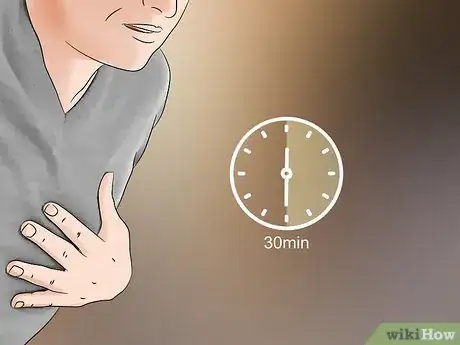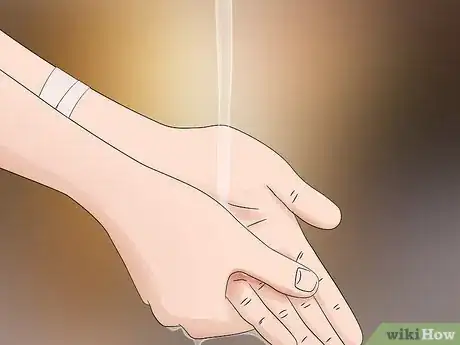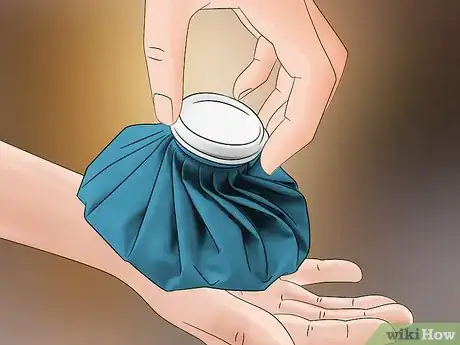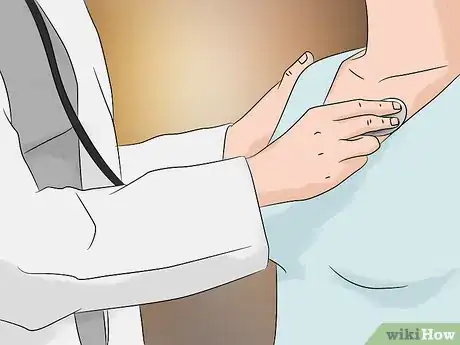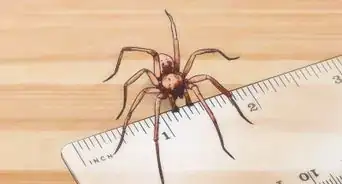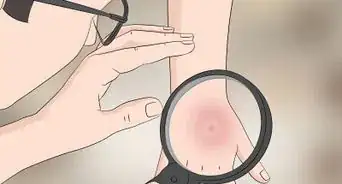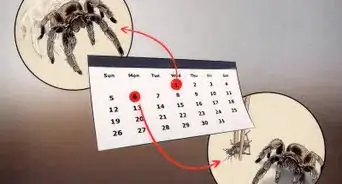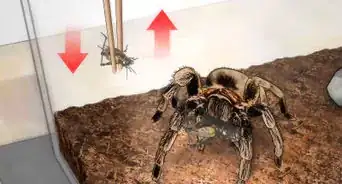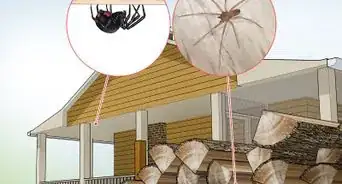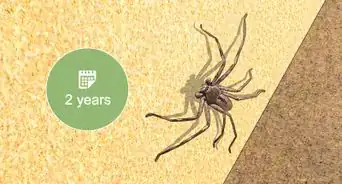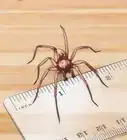This article was co-authored by wikiHow Staff. Our trained team of editors and researchers validate articles for accuracy and comprehensiveness. wikiHow's Content Management Team carefully monitors the work from our editorial staff to ensure that each article is backed by trusted research and meets our high quality standards.
There are 8 references cited in this article, which can be found at the bottom of the page.
wikiHow marks an article as reader-approved once it receives enough positive feedback. In this case, 93% of readers who voted found the article helpful, earning it our reader-approved status.
This article has been viewed 129,232 times.
Learn more...
The Brazilian wandering spider is a large, hairy spider that lives in South and Central America. It’s considered the most venomous spider in the world. Since these spiders sometimes wander right into towns, cities, and shipments of fruit, it’s important to be able to recognize this spider and know its habitat. If you happen to be bitten, you should get immediate medical attention. Don’t panic, however! These bites can almost always be treated.
Steps
Recognizing a Brazilian Wandering Spider
-
1Watch out for 6-inch (15 cm) long spiders with leg span. Adult Brazilian wandering spiders have a body that’s about 2 inches (5 cm) large. Their leg span, which may be easier to recognize, is about 6 inches (15 cm) in length. Exercise caution any time you see a spider that’s this large.[1]
-
2Expect spiders to be brown and hairy. While these spiders vary in color, most will be a muddy brown color, and some may have a black spot on their bellies. All Brazilian wandering spiders are hairy.[2]
- Some spiders may be more yellowish than brown. Others may appear to have black legs, or black bands on brown legs.[3]
Advertisement -
3Be prepared for a fast-moving spider. Brazilian wandering spiders get their name because they like to move along the floor of the rainforest. They catch prey by moving super quickly, so be wary of fast spiders you encounter in the Brazilian wandering spider’s habitat.[4]
-
4Back away slowly if the spider exposes its red jaw. If they feel threatened, these spiders rise up on their hind legs. This scary-looking posture will expose red hair around the fangs of some species of Brazilian wandering spiders. A spider in this defensive stance is not happy, and you should very carefully and slowly back away if you see this happen.[5]
-
5Don’t take the time to observe the spider. If you live or are traveling in the parts of South and Central America where these spiders live, don’t take the time to guess if you’ve spotted one. If you have any doubt, move away slowly and avoid angering the spider.
- Do not try to trap this spider. Call animal control professionals if you think you have one in your home or outdoor buildings, and leave those buildings while you wait for help.
Being Aware of Their Habitats
-
1Be on guard in Central and South America. Several species of this spider live in southern Central America and northern South America. In particular, Brazilian wandering spiders live in the rainforest of northern Brazil, Bolivia, Peru, Colombia, Venezuela, Guyana, Suriname, and French Guiana. Its habitat extends all the way down to northern Chile and Argentina.[6]
-
2Exercise caution around dark spaces. This nocturnal spider naturally likes to scuttle around on the forest floor. This “wandering” habit sometimes leads it to towns and cities, where it hides from sunlight in dark spots, including:[7]
- Small, unlit closets or nooks in homes
- Outdoor sheds and garages
- Cars
- Unused clothes, shoes, or gloves
- Boxes of food in pantries
- Boxes in attics or garages
- Woodpiles
-
3Take care when opening fruit shipments. This spider has made a name for itself by slipping into banana shipments and taking a ride along with the fruit. While this doesn’t happen very often, be careful when opening up and processing shipments from the Brazilian wandering spider’s habitat.[8]
Avoiding a Bite
-
1Wear protective gear in dark spaces or when moving firewood. If you live in the Brazilian wandering spider’s habitat, wear a long-sleeved shirt, hat, long pants tucked into your socks, and gloves whenever you’re doing spring cleaning in the garage or near the woodpile. It’s also a good idea to wear this gear when you’re working in attics, crawl spaces, or unfinished basements.[9]
-
2Shake out gloves, boots, and clothing that you haven’t worn recently. These spiders may hide in the folds of your clothes, and boots and gloves make particularly cozy sleeping spots. Gently shake these items out before you put them on. Avoid vigorously shaking them, because you don’t want to anger or scare any hidden spiders.[10]
- If a spider falls out, don’t panic. Back away slowly and leave the area.
-
3Inspect dark spots like closets before entering them. Turn on the lights. If you can’t do that, bring a flashlight and shine it into any corners and behind boxes or piles of stuff.[11]
-
4Install screens and tight-fitting doors to keep spiders out. The best way to avoid getting bitten in your home is to keep the spiders from getting in! Check all your screens and doors for holes, tears, or big spaces that could allow spiders to crawl through. Replace anything that’s loose or broken.[12]
- You can also spray bug and spider repellant around doors and windows to ward off creepy crawlies.
-
5Don’t store firewood against your house. Since woodpiles are perfect hiding places for these spiders, avoid creating a spider home right next to your home. Store wood and brush in your yard and always be careful when you move any of it.[13]
Treating a Bite
-
1Contact emergency medical personnel right away. If you feel there’s any chance you’ve been bitten by a Brazilian wandering spider, call for emergency medical assistance right away. Inform them of the situation, and ask if it would be faster for a family or friend to drive you to a medical center or for you to be picked up.[14]
-
2Expect severe symptoms within a half hour. Symptoms of a bite from a Brazilian wandering spider include either high or low blood pressure, a suddenly fast or slow heartbeat, nausea, stomach cramping, hypothermia, vertigo and blurred vision, convulsions, and excessive sweating. If you are experiencing these symptoms, call for help right away.[15]
- In men, these bites can also cause a long and painful erection.
-
3Clean the wound with soap and water. Wash out the site of the bite with warm water and mild soap. This may remove some of the venom, reducing the symptoms slightly.[16]
-
4Reduce swelling and pain with ice or a cold compress. Dampen a cloth with cold water or fill it with ice. Apply it to the wound to numb it. This should help you manage the pain.[17]
-
5Lie down with the bite below your heart. Stay calm, as this slows down the circulation of your blood. Keep the bite below your heart, as this also reduces the flow of the venom.[18]
-
6Get to a medical center as quickly as possible. Do what you need to do to get help quickly. If you have a friend or family member that can drive you to a medical center faster than an ambulance can reach you, do that. If you’re alone, wait for help. Don’t drive yourself.[19]
Community Q&A
-
QuestionHow do I kill a Brazilian wandering spider?
 Community AnswerGet the nearest semi heavy object and throw it at the spider till its dead.
Community AnswerGet the nearest semi heavy object and throw it at the spider till its dead. -
QuestionWhat happens if I'm allergic and I get bitten?
 Community AnswerTreat the bite as soon as possible and make sure to call an ambulance or get medical attention immediately.
Community AnswerTreat the bite as soon as possible and make sure to call an ambulance or get medical attention immediately. -
QuestionIs a Brazilian wandering spider a poisonous species?
 Community AnswerDo you mean venomous? If so, yes, because it transmits venom via bite, but if you mean poisonous, you probably shouldn't eat it unless it's roasted.
Community AnswerDo you mean venomous? If so, yes, because it transmits venom via bite, but if you mean poisonous, you probably shouldn't eat it unless it's roasted.
Warnings
- Children are more susceptible than adults to the venom of a Brazilian wandering spider, and you should ensure that any child who’s bitten gets medical attention as quickly as possible.⧼thumbs_response⧽
References
- ↑ https://www.livescience.com/41591-brazilian-wandering-spiders.html
- ↑ https://www.livescience.com/41591-brazilian-wandering-spiders.html
- ↑ http://www.wandering-spiders.net/phoneutria/gallery/
- ↑ https://animalcorner.co.uk/animals/brazilian-wandering-spider/
- ↑ https://www.livescience.com/41591-brazilian-wandering-spiders.html
- ↑ http://bioweb.uwlax.edu/bio203/s2013/johnson_jor4/habitat.htm
- ↑ http://bioweb.uwlax.edu/bio203/s2013/johnson_jor4/habitat.htm
- ↑ https://animalcorner.co.uk/animals/brazilian-wandering-spider/
- ↑ http://www.mayoclinic.org/diseases-conditions/spider-bites/manage/ptc-20204189
- ↑ http://www.mayoclinic.org/diseases-conditions/spider-bites/manage/ptc-20204189
- ↑ https://www.livescience.com/37974-he-surprising-cause-of-most-spider-bites.html
- ↑ http://www.mayoclinic.org/diseases-conditions/spider-bites/manage/ptc-20204189
- ↑ http://www.mayoclinic.org/diseases-conditions/spider-bites/manage/ptc-20204189
- ↑ http://www.mayoclinic.org/first-aid/first-aid-spider-bites/basics/art-20056618
- ↑ https://www.livescience.com/41591-brazilian-wandering-spiders.html
- ↑ http://www.mayoclinic.org/first-aid/first-aid-spider-bites/basics/art-20056618
- ↑ http://www.mayoclinic.org/first-aid/first-aid-spider-bites/basics/art-20056618
- ↑ http://www.webmd.com/first-aid/snakebite-treatment
- ↑ https://www.livescience.com/41591-brazilian-wandering-spiders.html
About This Article
To identify a Brazilian wandering spider, look for a spider with a long leg span of about 6 inches and a brown, hairy body. Also, carefully examine the spider from afar to see if it has large red fangs, which are common in Brazilian wandering spiders. Keep in mind that Brazilian wandering spiders only live in South and Central America. If you encounter one, move away slowly since Brazilian wandering spiders are aggressive and very poisonous. To learn how to avoid getting bitten by a Brazilian wandering spider, scroll down!
